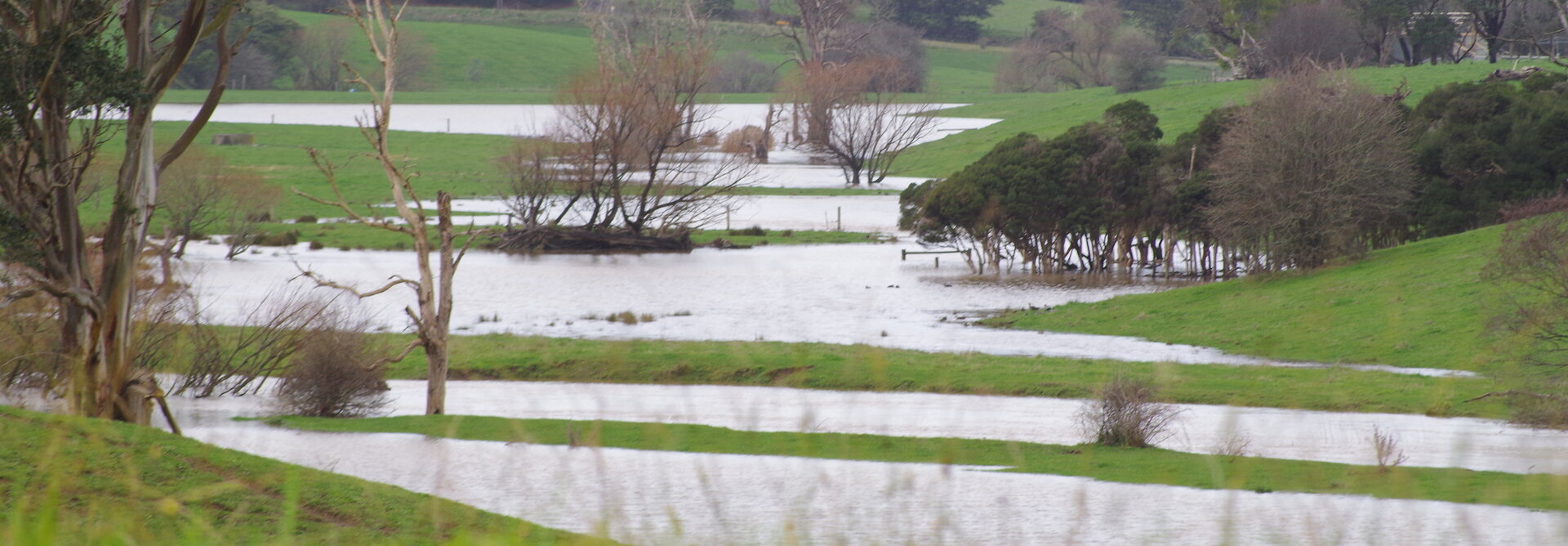The most significant event for me in the past 2 months was that my daughter, Addie, accepted a marriage proposal from Drew on one of the rail trail bridges.
However there was plenty of other traffic along the rail trail at Easter and visitors enjoyed seeing a koala close-up on an over-hanging tree. Unfortunately it appears that trees on adjoining farmland may have been significantly impacted by aerial spraying.
A small group of Landcarers met at Tanderra Park, Meeniyan for a Rail Trail walk followed by dinner and meeting at the hotel. Sue Miles had developed a questionnaire/treasure hunt which heightened our awareness of our surroundings and stimulated much discussion on community projects, local history, birds, our beautiful native plants and invasive “weed” plants. All provide a great opportunity for community cooperation along the rail trail. Thanks to our dedicated Landcare Coordinator, Jill Vella, and Secretary Coral Hughes who have doggedly completed the documentation required for our two groups to be merged. The next Landcare meeting will be Friday 8th June.
To promote our BSCW project and support the Healesville to Phillip Island Naturelink plan, I (dressed as a fossil bed!) attended the 150 year celebration of Harewood House. Despite awful weather, the event was very successful and I was pleased that substantial interest in our wetland project was generated, especially from people who drive along the South Gippsland Highway through the Black Spur Creek bends. Because of its botanical significance, Friends of the Royal Botanic Gardens Cranbourne have also expressed an interest in learning more about the site.
A team from Museum Victoria recently worked on the fossil site. Tom Rich gave us this update: “The purpose of the dig will be to acquire some slabs of the fossiliferous rock. The slabs will be used for two purposes. First, to test various scanning techniques to determine whether fossils can be detected within the slabs. Some may work fine and others may not work at all. The only way to find out is to try the various methods now available. The second reason is to determine whether slabs will disintegrate if kept for a prolonged period. If they will not deteriorate after several months, it will mean that a small crew can collect a large number of slabs that can be examined for fossils in the years to come. This rather than having a large crew on site when the slabs are excavated who examine them for fossils as soon as they are out of the ground.”
Interested landcarers are welcome to attend the following event organized by the Australian Plant Society, South Gippsland Group:
Sunday April 22nd : 2.00 pm Andersons Inlet Angling Club Hall, 88 The Esplanade, INVERLOCH. Mike Cleeland, Education Officer, Bunurong Environment Centre.
Dinosaurs of Koonwarra and Inverloch - ALL WELCOME – No Charge !
Kate Walsh, Coordinator, Black Spur Creek Wetland Project, for Nerrena/Tarwin Valley Landcare Group.
walshpk@gmail.com. Phone 0409 418 223.
TAGS
Black Spur Creek Wetlands Project - Update 7
April 8, 2018

